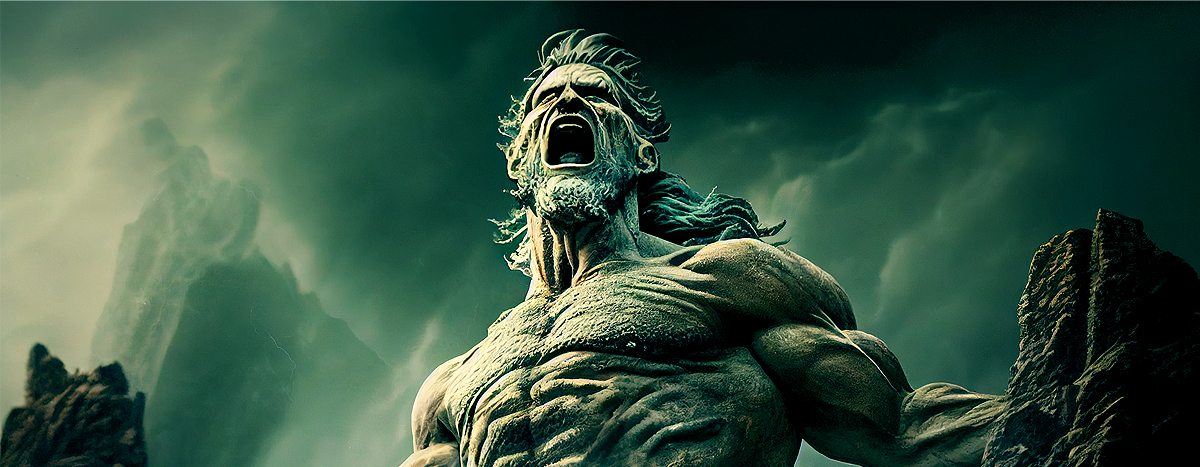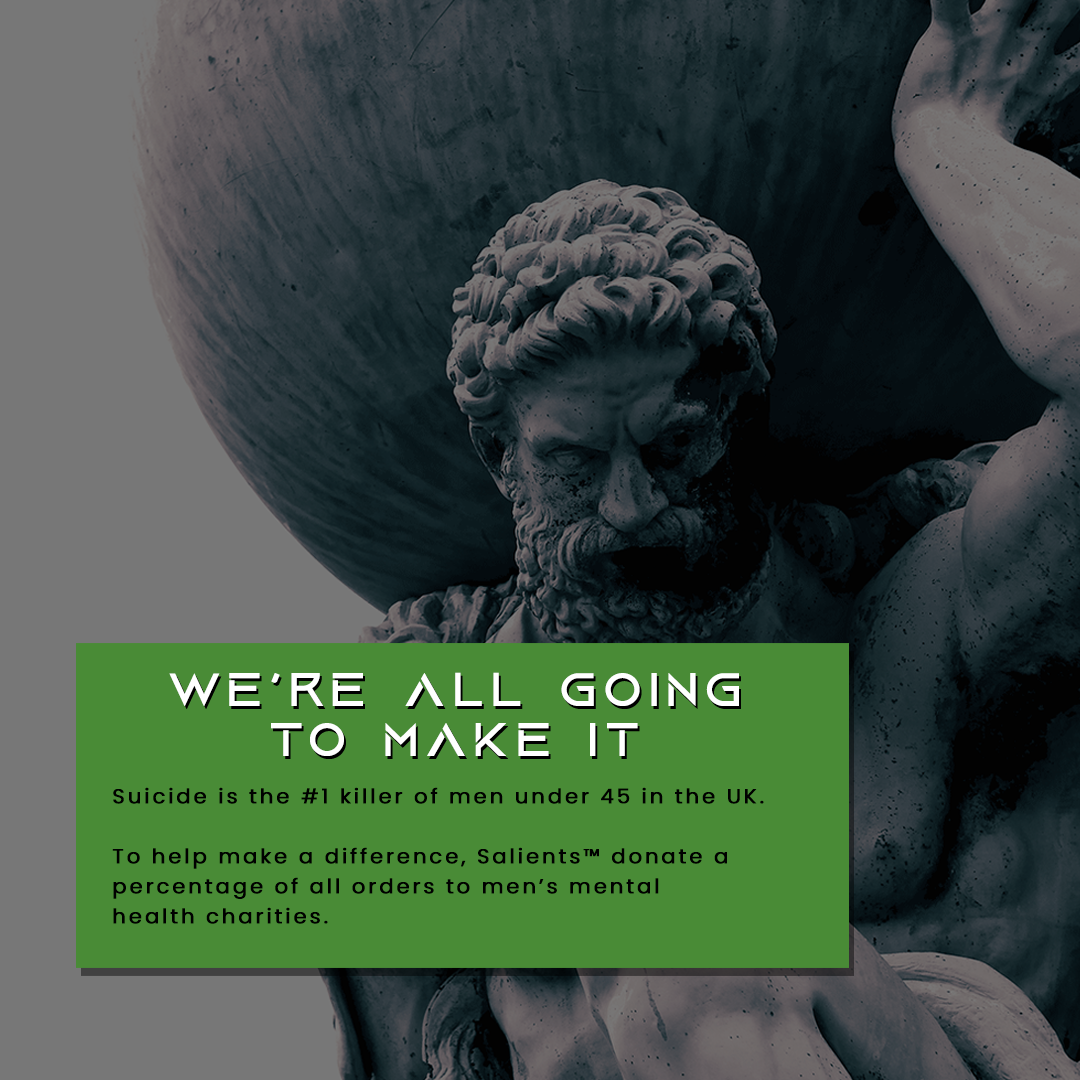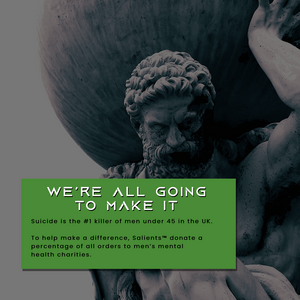Your Cart is Empty
MAKE YOUR ANCESTORS PROUD | FREE SHIPPING ON ALL UK AND US ORDERS
MAKE YOUR ANCESTORS PROUD | FREE SHIPPING ON ALL UK AND US ORDERS
Pillars of Traditional Masculinity
by The Salients April 01, 2023 3 min read

In today's world, the concept of traditional masculinity is criticised as societal norms and gender roles change. Yet many young men gravitate towards traditional masculine values as they search for an identity and a sense of belonging. Here are 18 pillars of traditional masculinity, in the eyes of the SALIENTS® and in no particular order.
-
STRENGTH: Develop your physical and emotional strength (Connell, 2005) because you are a source of stability for your family & community.
-
PHYSICALITY: Physical activity and sports are important as they develop and demonstrate a man's physical abilities and competence.
-
INDEPENDENCE: Learn to be self-reliant, becoming emotionally and financially independent and rarely, if ever, a liability to others.
-
EMOTIONAL CONTROL: Discourage yourself from regularly expressing vulnerability or sadness, as these emotions are perceived as signs of weakness (Kimmel, 2008) and only provide temporary pain relief. It's okay to communicate how you feel constructively but alongside this, ensure you motivate yourself to focus on problem-solving. Taking control of your situation will help resolve sadness.
-
COURAGE: Be brave in the face of danger and adversity. Train for this by regularly taking risks, completing productive tasks that create anxiety and surrounding yourself with like-minded men. Common tasks include e.g. physical training, combat sports, learning new skills and doing things alone.
-
PROVIDER: Men are the primary breadwinner for their families, responsible for ensuring their financial well-being. This is regardless of wider economic circumstances.
-
PROTECTOR: Serving as a guardian for their loved ones, men are expected to keep their families safe from harm or even sacrifice themselves as a last-resort, to ensure their family's survival.
-
COMPETITIVE: Strive for success and dominance in various areas of life, including sports, work, and relationships.
-
LEADERSHIP: You are a natural leader, with the ability to guide and direct others through life experience.
-
SEXUALITY: Traditional masculinity emphasises heteronormative relationships and sexual assertiveness (Connell, 2005). Heterosexuality, that there are only two genders and forming relationships for the purpose of marriage.
-
CHIVALRY: Chivalrous behavior, such as treating others with respect and offering assistance. Be a role model for others in your community.
-
DISCIPLINE: Self-control and resistance to temptation are considered masculine traits, reflecting a sense of duty and responsibility.
-
HONOUR: Personal integrity and adherence to a moral code to guide behaviour and attitudes.
-
MASTERY: Traditional masculinity values expertise and competence in various skills, from practical to intellectual and artistic pursuits. All men should strive to become great at what they do. You don't have to be better than everyone, strive to be the best *you* that you can be.
-
ADVENTURE & RISK-TAKING: Seek adventure and embrace risks as a means of personal growth, demonstrating courage
-
ASSERTIVENESS: Decisive communication and decision-making are expected in traditional masculine roles. Being assertive demonstrates confidence.
-
LOYALTY: Commitment and trustworthiness towards family, friends, and institutions are valued in traditional masculinity.
-
PERSEVERANCE: Persistence and tenacity in the face of challenges are encouraged among men. A man who never gives up, regardless of circumstances, is a man who can be relied upon.
The pillars of traditional masculinity have played a significant role in shaping cultural perceptions of men. Many of these roles are centered around serving others for the greater good and creating stability. Yet in modern times, many criticise these traits as perpetuating harmful gender norms and toxic masculinity.
As societal attitudes towards gender roles continue to unravel, blurring the lines between what it is to be a man or a woman, we think it is important for young men to embrace tradition and strive to incorporate elements of traditional masculinity in to their lives.
References:
Connell, R. W. (2005). Masculinities. Polity.
Kimmel, M. (2008). Guyland: The perilous world where boys become men. HarperCollins.
The World's First Superfood Blend For Men
ATHANASE
2179 reviews
£28.00
MAKE YOUR ANCESTORS PROUD® with ATHANASE®. A blend of herbs specially formulated for men, to help conquer 7 areas:
| |
MALE HEALTH |
| |
ATHLETICISM |
| |
MOOD & COGNITION |
| |
RECOVERY & SLEEP |
| |
GUT HEALTH |
| |
IMMUNITY |
| |
AESTHETICS |
As seen in Men's Health Magazine and Certified by Informed Sport.
G
Glen Cromie Love it
Great stuff glad I started using it
M
Matthew Rogers Great product
This productbhas changed my life. Feel full of energy and helped my recovery after workouts. Do not hesitate the taste is worth it and isnt even that bad!!
B
Blayne Carter Great stuff
Have this everyday and feel great from it
L
Luke Nolan A change in energy
I have such an increase in energy now that i am taking at least one scoop a day.
A
Adam Stott More energy
Was put onto this by a friend who swears by it.
Have taken lots of supplements in the past but this is truly different. Have more energy and still feel fresh at work even in the afternoon when normally I would be waning. Definitely going to reorder. Thanks 🙏🏻
Select a purchase option to pre order this product
Countdown header
Countdown message
Countdown message
DAYS
:
HRS
:
MINS
:
SECS


























